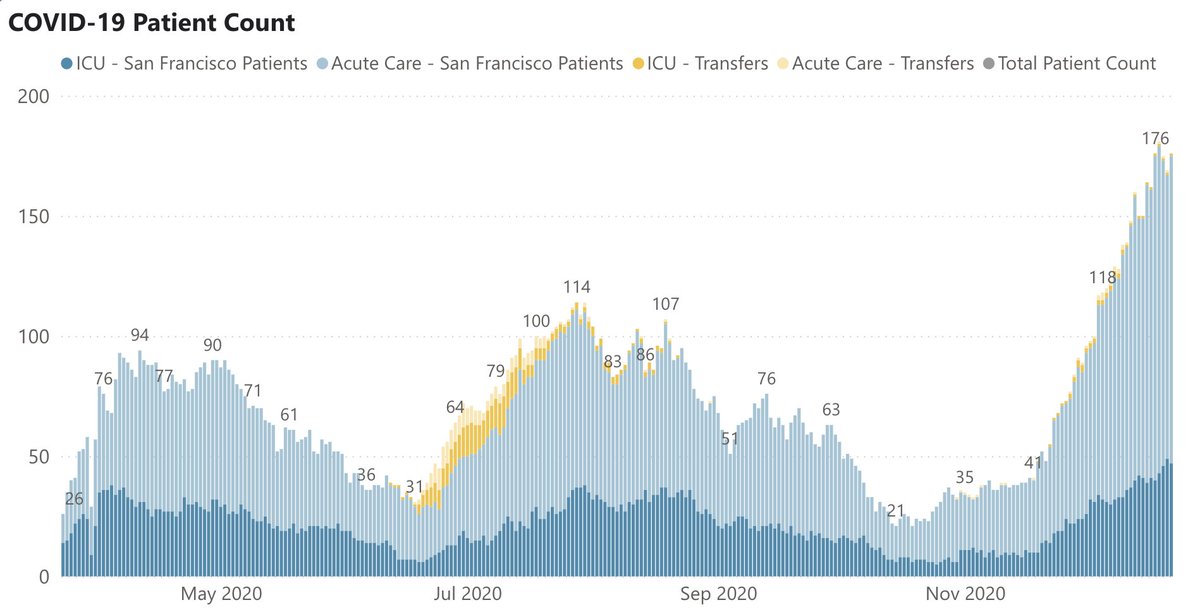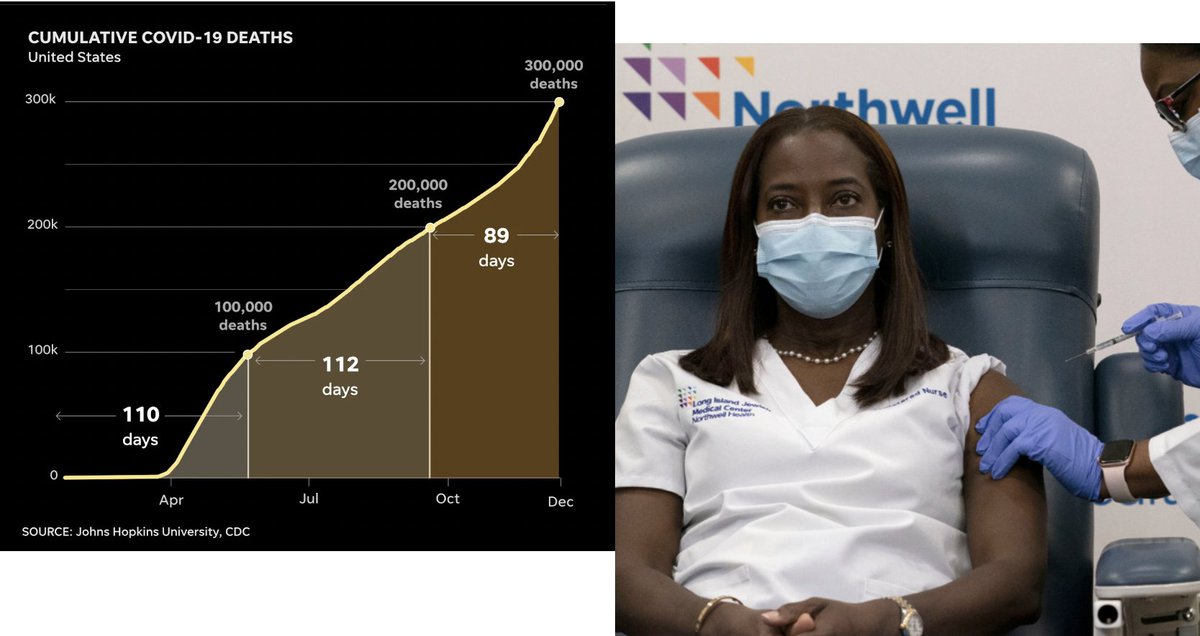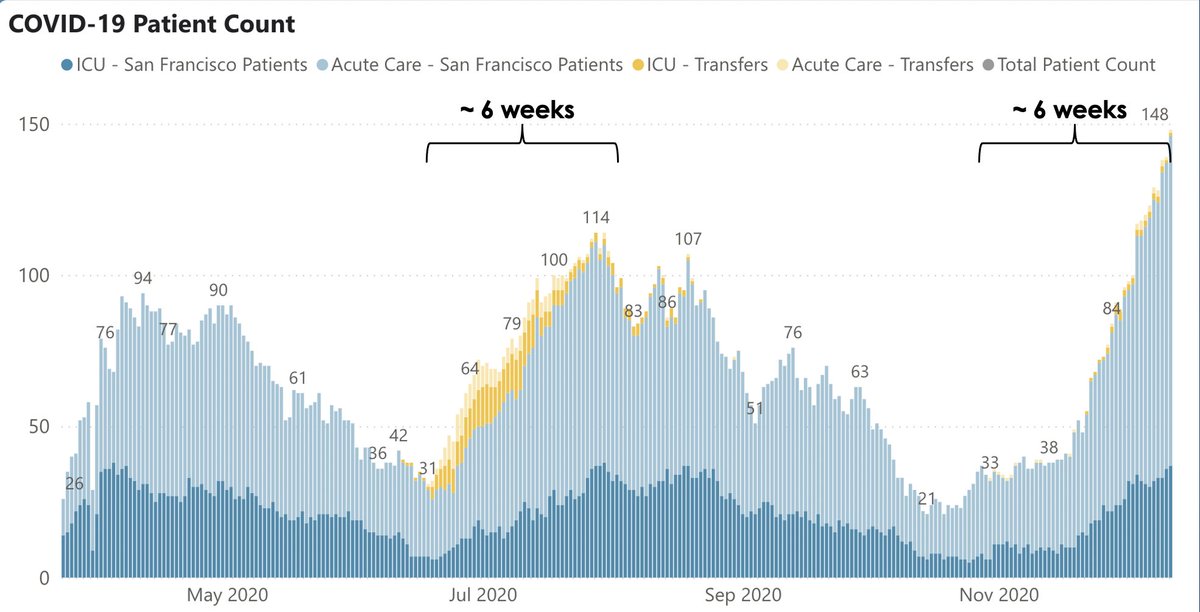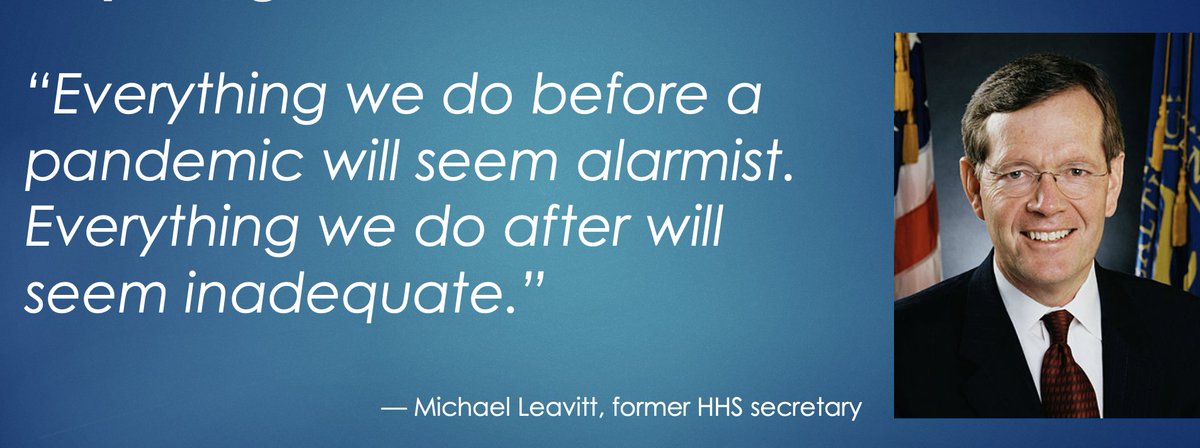
1/ Covid (@UCSF) Chronicles, Day 287
Today, a brief update on the local situation in SF & CA, and then a few reflections on a series of new failures in the U.S. that, sadly, make clear how difficult it is for our country to get execution right in the fight against Covid-19.
Today, a brief update on the local situation in SF & CA, and then a few reflections on a series of new failures in the U.S. that, sadly, make clear how difficult it is for our country to get execution right in the fight against Covid-19.
2/ First, a brief update on the local scene. Bottom line: not much change, which is either good or bad news, depending on how you feel about half-filled (or empty) glasses. Personally, I don’t feel great about it, since we’re just starting to see the impact of holiday mingling.
3/ TSA reported 1.3 million people screened at airports Sunday, a 60% decrease from last year but still an awful lot of travel for a country that should be staying home. After 10 months, the urge to be with friends & family is understandable, but the cost will be very high.
4/ @UCSFHospitals, our numbers are still plateaued, but high. Currently 61 Covid pts in hospital, 10 on vents – about same as for last 10 days (Fig L). Test positivity rate is also wiggling around; if anything it's up a bit: 5.1% overall, and 2.5% in asymptomatic people (Fig R). 

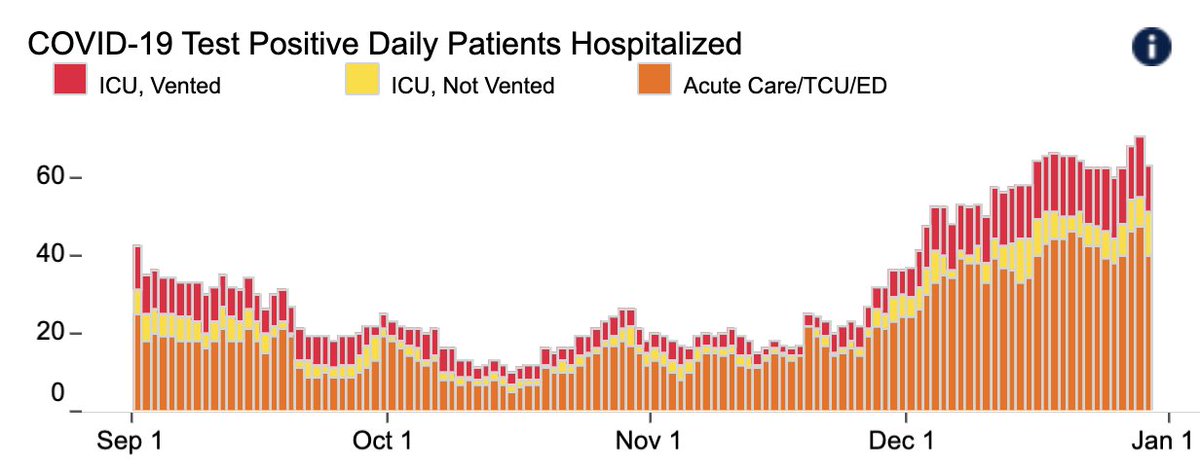
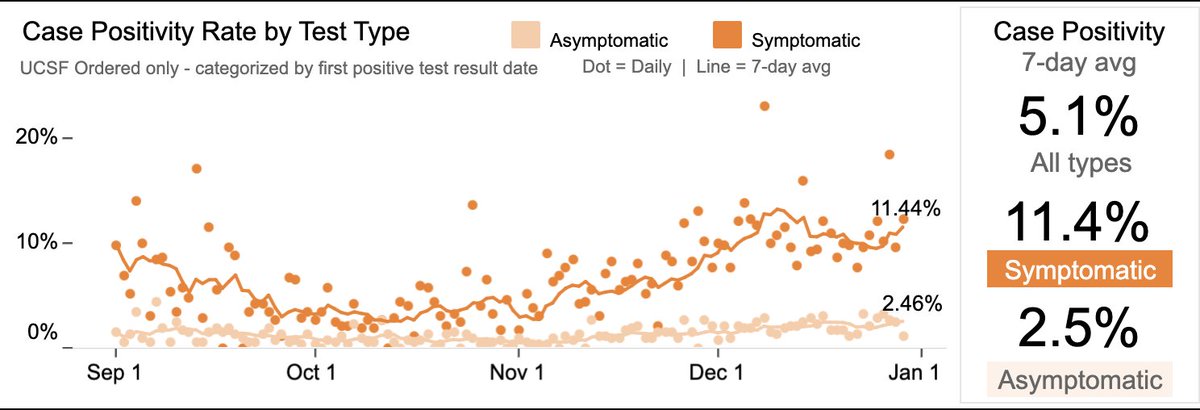
5/ San Francisco also plateauing & perhaps improving a bit – new cases down to 259, ~10% drop. (Fig L). SF test positivity is also down (3.7, vs. 4.3 last week). Hospitalizations up to 198 (Fig R), reflecting infections that occurred ~2 weeks ago, so this might peak & fall soon. 

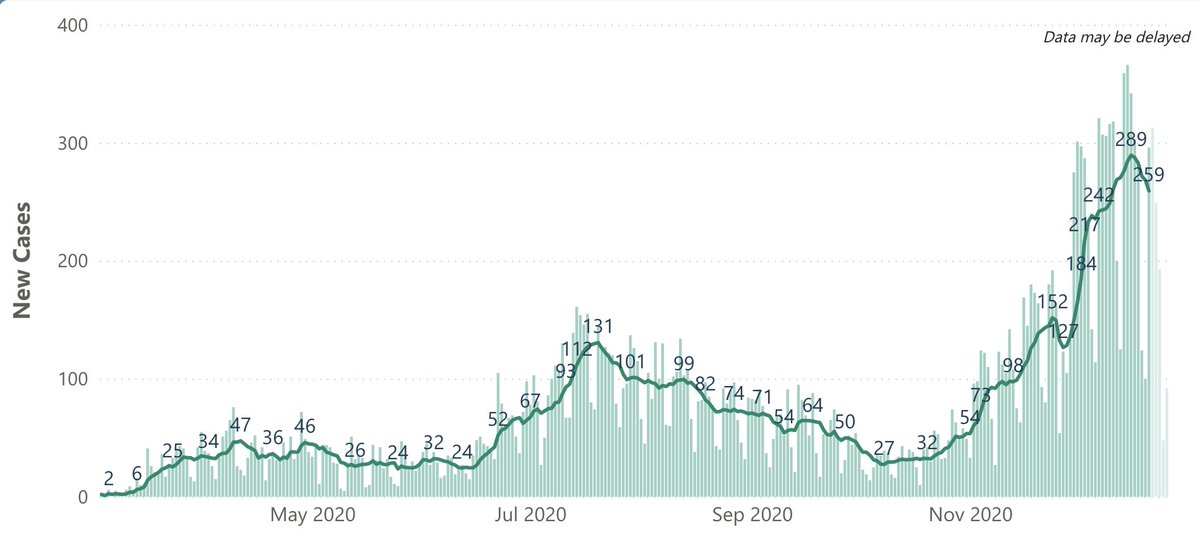
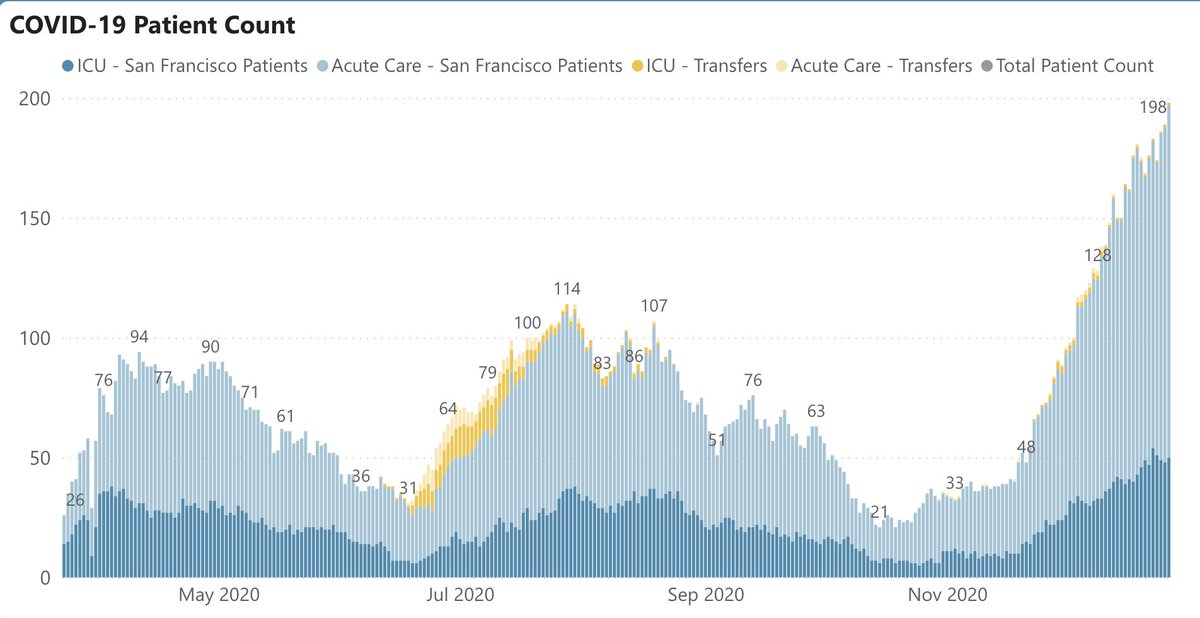
6/ California continues to struggle, particularly in San Joaquin Valley and LA regions (Fig). LA had 13,661 new cases yesterday, and currently has 6,900 hospitalized Covid patients. Gov @GavinNewsom just extended stay-at-home orders for most of the state tinyurl.com/y7s3uvqr 
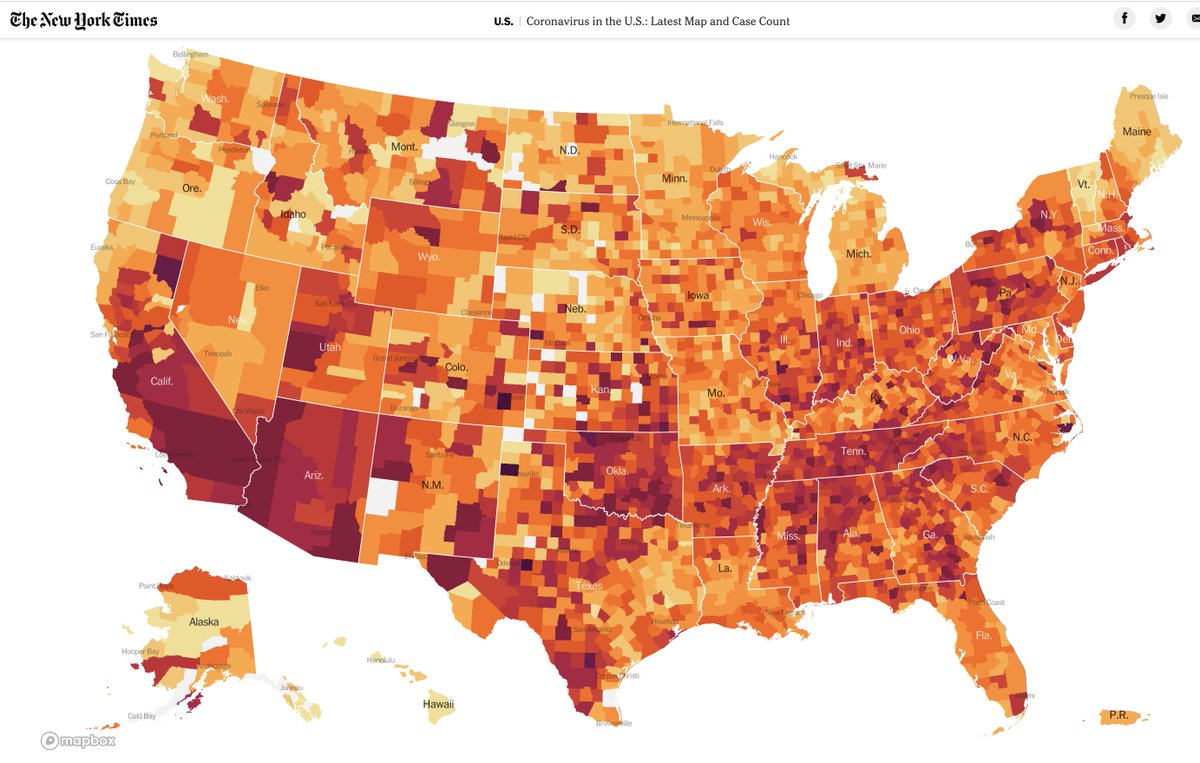
7/ This graph, from the 5 Univ. of CA Hospitals (@UCLA, @UCSanDiego, @UCIrvine, @UCDavis, @UCSF) illustrates big variation across CA. UCSF is affected the least, w/ ~60 pts in hospital, whereas UCLA has ~200 and UC Irvine ~170. (The hospitals range in size from ~400-700 beds.) 
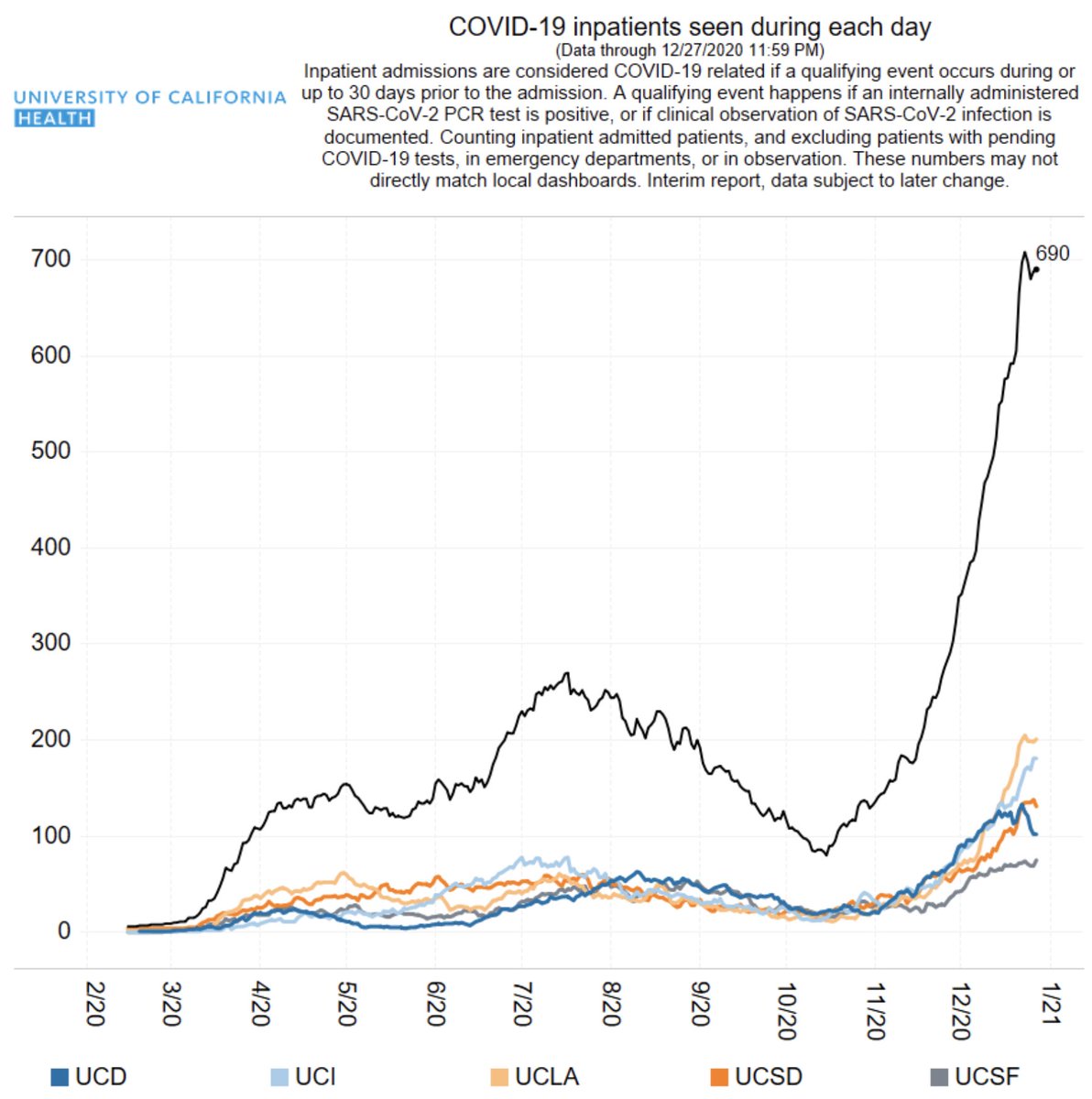
8/ I remain amazed by SF’s low death rate: 182 deaths since March; only 26 in last 60 days. Whereas LA had 77 deaths yesterday & 9,555 deaths since March. (Reminder: LA has 11x the population of SF.) @latimes on what has gone horribly wrong w/ Covid in LA: tinyurl.com/ybtxlyz8
9/ While CA’s surge is very real and tragic, our huge population makes things look worse than they are, comparatively. On per-person basis, even w/ surge, CA ranks 33rd among states in cases/100K (5,595; North Dakota is #1 at 12,051) and 42nd in deaths/100K (62; NJ is #1 at 201).
10/ Nationally, we’re seeing a small overall improvement, w/ Midwest leading the way, & CA, for the first time, having the country’s largest surge (Fig). But again, this may well be the calm before the storm, as it’s too early for the numbers to reflect any holiday-related surge. 
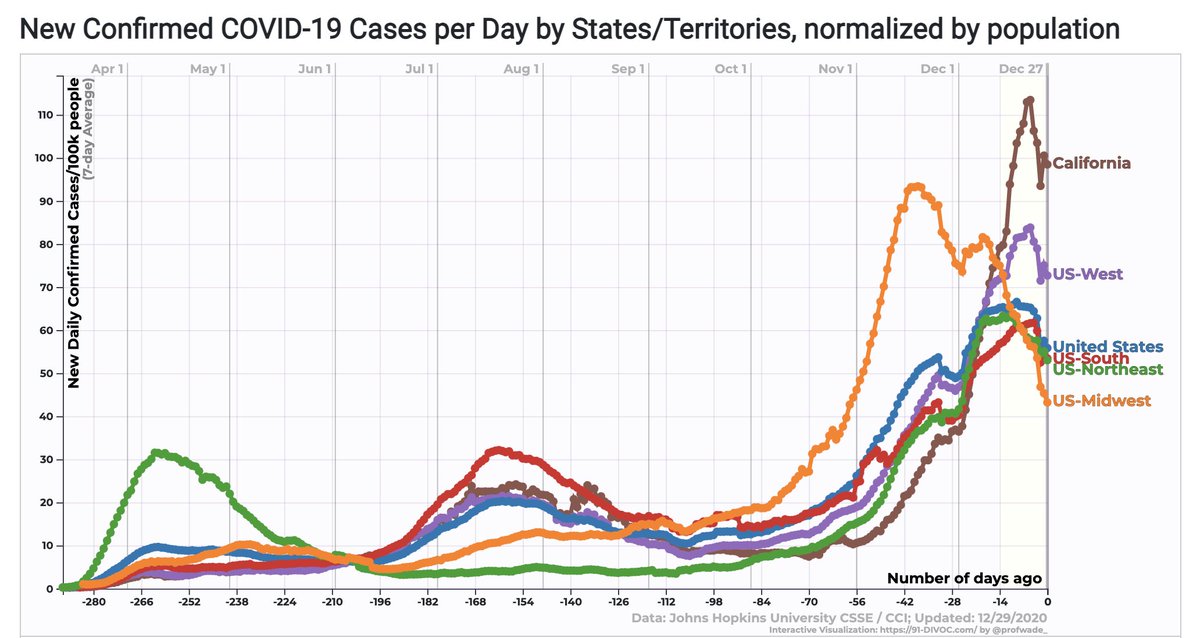
11/ We’ve hit another milestone with the national death count: it's now 336,000, which means that we’re approaching the population of Honolulu or Anaheim, having blown past Pittsburgh & St. Louis. Perhaps more vividly, it means that >1 in 1000 Americans have died of this virus…
12/ …and also of our inability to mount & sustain a proper response. It was wishful thinking to believe that remarkable discovery of 2 safe & effective vaccines would demarcate a stark change in our nation’s ability to respond to the political & operational challenges of Covid…
13/ … but, as an eternal optimist, I hoped that the combination of these vaccines, plus Trump moving toward the exit [pause for hilarious video, particularly for those who are not Trump fans: tinyurl.com/y8zoknyq] might put us in a better place…
14/ … when it comes to our Covid response. But I’m afraid we’re continuing to demonstrate that we suck at the execution part of pandemics. 2020 was filled with examples, but here are a few of the most recent ones; not a great omen for 2021:
15/ The vaccine rollout has been fairly abysmal. We thought that the bottleneck would be vaccine production (& it’s still limited) & acceptance (which will be an issue once the supply is plentiful). And, given how poorly we did w/ the production and distribution of tests & PPE…
16 … problems w/ the vaccine rollout might have been predicted. But, as @ashishkjha describes in this thread today tinyurl.com/y8bf3z6r, the rollout has gone even worse than we feared, with only 2.1M doses of vaccine injected so far, which is about 1 out of 155 Americans.
17/ Contrast this w/ Israel, w/ 8.8M people, which has vaccinated ~500K, ~1 in 18 of its citizens tinyurl.com/ybkez9gx How’d they do it? A well executed nat'l plan. Whereas U.S., as usual, has underfunded the effort & left heavy lifting to under-resourced state health depts.
18/ Added to the US's slow pace, I remain terribly worried re: the skirmishes over prioritization – rapidly turning into a Battle of the Interest Groups. I fear that vaccines will be to 2021 what masks were to 2020 – a partisan mess that kills people. More on this in coming days.
19/ Sorry, more bad news: we now have first U.S. case of the UK’s coronavirus variant that appears to be more contagious. The virus was found in Colorado, in a man who has had no international travel, meaning it’s already here & spreading, perhaps widely. tinyurl.com/y8fkndbu
20/ Scientific consensus is that this variant is real & worrisome tinyurl.com/y7umfewx. Why did we just identify our 1st case, when there are likely many? It turns out that we’re far behind the UK – even behind Wales – in looking for genomic variations tinyurl.com/y84sdzmr
21/ Thankfully, while the mutations seem to make the virus more contagious (which means that we'll need to be even more careful with masks & distancing than we were before), it doesn’t seem to be more virulent, or to be resistant to the vaccines. But it all bears close watching.
22/ Given that the virus remains very much with us, it’s crucial that we develop & deploy effective treatments. So another troubling development is limited use of monoclonal antibodies tinyurl.com/ydx4z3sm While not game changers, they do seem to prevent deterioration in…
23/ hi-risk pts, if given early. But – & there’s a theme – monoclonals are tricky to give, requiring rapid testing to identify eligible pts, then ability to infuse them safely into Covid pts, keeping them isolated from other pts.
In other words, they require careful execution.
In other words, they require careful execution.
24/ I’m reminded of the great Seinfeld scene when Jerry learns that a rental car he’s reserved isn’t available tinyurl.com/k9gww2d “You know how to take the reservation, you just don’t know how to hold the reservation…and that’s really the most important part, the holding.”
25/ As @PeterbachMD observed today tinyurl.com/y9ng3qfs, we seem to be “all breakthrough & no follow-through.” As we approach 2021, let’s hope that the new team, which takes over in ~500 hrs, can nail the follow-through/execution part. Tens of thousands of lives are at stake.
• • •
Missing some Tweet in this thread? You can try to
force a refresh




